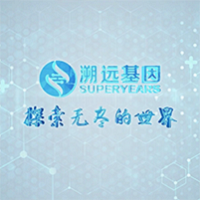
Privacy statement: Your privacy is very important to Us. Our company promises not to disclose your personal information to any external company with out your explicit permission.

The specifications of a Nucleic Acid Extrator can vary depending on the specific model and manufacturer. However, some common specifications and features are as follows:
1. Processing capacity: This refers to the number of samples that can be processed simultaneously. It can range from a few samples to high-throughput systems capable of processing hundreds of samples in a single run.
2. Extraction principles: Different Dna Nucleic Acid Extrator may utilize different extraction principles such as silica-based binding, magnetic beads, or column-based methods. The choice depends on the specific application and desired purity and yield of the extracted nucleic acids.
3. Automation level: Nucleic acid extractors can range from manual systems to fully automated instruments. The automation level determines the amount of hands-on time required and the degree of user intervention during the extraction process.
4. Sample types: The extractor should be compatible with the intended sample types such as whole blood, tissue, cells, or various body fluids. Some instruments offer versatile sample compatibility, while others may have limitations.
5. Throughput and speed: The time taken for extraction and the number of samples that can be processed per run affect the overall efficiency. Some extractors have rapid protocols that reduce processing time, while others may have longer extraction times but offer higher yield and purity.
6. Software and connectivity: Automated Nucleic Acid Extrator can come with software that allows users to program and control the extraction process, store protocols, and analyze data. Connectivity options may include USB, Ethernet, or Wi-Fi for data transfer and integration with laboratory information management systems (LIMS).
7. Safety features: Nucleic acid extractors often have safety features to prevent contamination, such as UV sterilization, HEPA filters, and automated system cleaning protocols.
These specifications should be considered along with other factors like cost, service support, and user reviews when selecting a nucleic acid extractor to ensure it meets the specific requirements of the intended applications and workflow.
December 23, 2021
May 02, 2022
April 23, 2024
April 23, 2024
Real-Time PCR Instrument Display The specifications of a Thermal Cycler Real Time PCR System Machine can vary depending on the model and manufacturer. Here are some common specifications you might...
Real-Time PCR Instrument Display A Thermal Cycler Real Time PCR System machine, also known as a real-time PCR thermal cycler or qPCR (quantitative PCR) machine, is a device used in molecular biology...
Real-Time PCR Instrument Display Choosing the right Thermal Cycler Real Time PCR System machine is crucial for the success of your experiments. Here are some key factors to consider when selecting a...
Real-Time PCR Instrument Display Thermal Cycler Real Time PCR System machines are sophisticated instruments that offer a range of features and capabilities essential for performing real-time...
Email to this supplier
December 23, 2021
May 02, 2022
April 23, 2024
April 23, 2024
Send Inquiry

Mr. Mr. Léi
Tel:0086-025-57561788
Fax:
Mobile Phone:+8617353779332
Email:wanglei@superyears.com
Address:Nanjing, Jiangsu
Related Products List
Mobile Site


Privacy statement: Your privacy is very important to Us. Our company promises not to disclose your personal information to any external company with out your explicit permission.

Fill in more information so that we can get in touch with you faster
Privacy statement: Your privacy is very important to Us. Our company promises not to disclose your personal information to any external company with out your explicit permission.